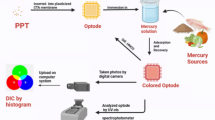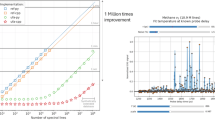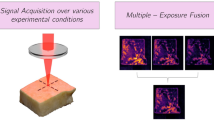Abstract
AN attempt has been made to find the Raman spectrum of ozone, using a 30 per cent solution of ozone in liquid oxygen and a mercury arc as the exciting light. The solution is a dark purple in colour and absorbs the mercury line at 4358 A. quite considerably. The mercury line at 4046 A., however, is scattered fairly strongly, but it has no strong Raman companions. There is an extremely weak doublet corresponding to a mean frequency shift of 1280 cm.−1, but no other Raman lines could be observed even with exposures lasting 80 hours. The spectrograph used was not particularly fast, but photographs of the weak oxygen line at 1550 cm.−1 from 4046 A. could be obtained in 10 hours.
This is a preview of subscription content, access via your institution
Access options
Subscribe to this journal
Receive 51 print issues and online access
$199.00 per year
only $3.90 per issue
Buy this article
- Purchase on SpringerLink
- Instant access to full article PDF
Prices may be subject to local taxes which are calculated during checkout
Similar content being viewed by others
References
Jakowleva and Kondratjew, Phys. Rev., 39, 533; 1932.
Placzek, Z. Physik, 70, ; 1931.
Author information
Authors and Affiliations
Rights and permissions
About this article
Cite this article
SUTHERLAND, G., GERHARD, S. Raman Spectrum and Molecular Structure of Ozone. Nature 130, 241 (1932). https://doi.org/10.1038/130241a0
Issue date:
DOI: https://doi.org/10.1038/130241a0



